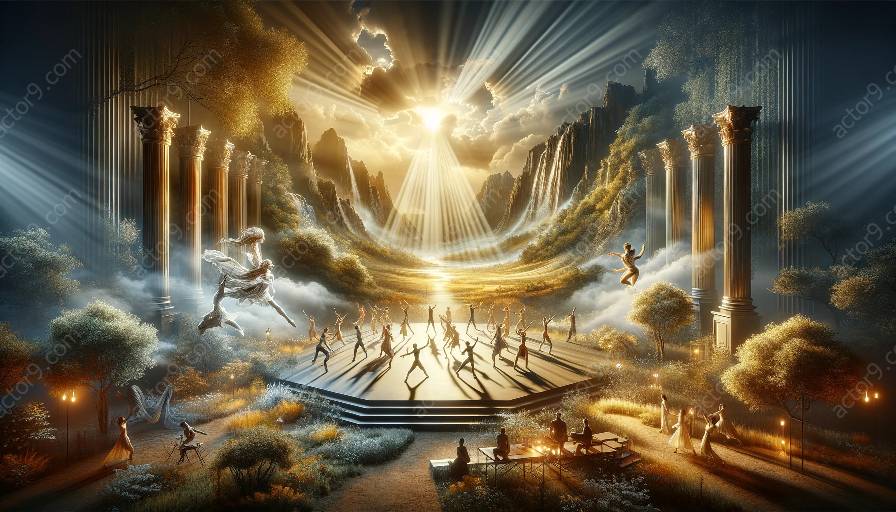Physical theatre is a dynamic and expressive art form that relies heavily on the interplay between performers, creators, and lighting. The psychological effects of lighting on the individuals involved in physical theatre productions can significantly impact their performances and creative processes. Delving into the role of lighting in physical theatre unveils a fascinating intersection of technical, emotional, and psychological elements that shape the overall experience for both the audience and the artists.
The Role of Lighting in Physical Theatre
Lighting is an integral component of physical theatre, serving as a powerful tool for evoking mood, accentuating movement, and shaping the visual dynamics of a performance. In physical theatre, lighting not only illuminates the stage but also becomes an active participant in the narrative, influencing the emotional resonance of the audience and guiding their focus. The careful orchestration of lighting effects can transform the physical space, creating immersive environments that transport the audience into the world of the performance.
The Psychological Effects of Lighting
Impact on Performers: Lighting plays a crucial role in shaping the mental and emotional states of performers in physical theatre. The interplay of light and shadow can evoke profound emotions, influencing the psychological disposition of the actors and dancers. Well-designed lighting can empower performers by enhancing their sense of presence and physicality, bolstering their confidence and expressive capabilities. Conversely, harsh or inadequate lighting can create discomfort and inhibit the performers' ability to fully inhabit their characters and movements.
Creative Inspiration: Lighting design not only affects the performers but also deeply influences the creative process of directors, choreographers, and designers. The manipulation of lighting can spark innovative approaches to movement, spatial composition, and storytelling, fostering a symbiotic relationship between visual aesthetics and dramatic expression. The psychological impact of lighting on creators is multifaceted, as it can inspire, challenge, and enrich their artistic vision, ultimately shaping the overall tone and atmosphere of the production.
Emotional Resonance and Perception
Lighting exerts a profound influence on the emotional resonance of physical theatre productions. Subtle shifts in lighting can alter the audience's perception of time, space, and narrative depth, immersing them in a sensory journey that transcends the boundaries of traditional storytelling. Through the interplay of light and darkness, physical theatre performances acquire a heightened emotional depth, inviting the audience to engage with the evocative nuances of human experience.
Empowering Artistry
Collaborative Dynamics: The psychological effects of lighting extend to the collaborative dynamics within physical theatre productions. Effective communication between lighting designers, performers, and directors cultivates an environment of mutual understanding and creative synergy. Shared insights into the psychological impact of lighting enable artists to harness its potential as a transformative force, amplifying the cohesiveness and impact of the overall artistic vision.
Transcending Boundaries: Lighting serves as a bridge between the physical and emotional dimensions of physical theatre, transcending conventional boundaries to unfold captivating narratives and evoke visceral responses. By harnessing the psychological effects of lighting, performers and creators in physical theatre productions can transcend the limitations of traditional storytelling, crafting immersive experiences that resonate beyond the confines of the stage.
Conclusion
The psychological effects of lighting on performers and creators in physical theatre productions are intricately woven into the fabric of artistic expression, illuminating the transformative power of light as an essential element of storytelling and emotional resonance. Understanding the symbiotic relationship between lighting and the psychological landscape of physical theatre enriches our appreciation for the depth and complexity of this dynamic art form, shedding light on the inherent interplay between technical precision and profound human experience.




































